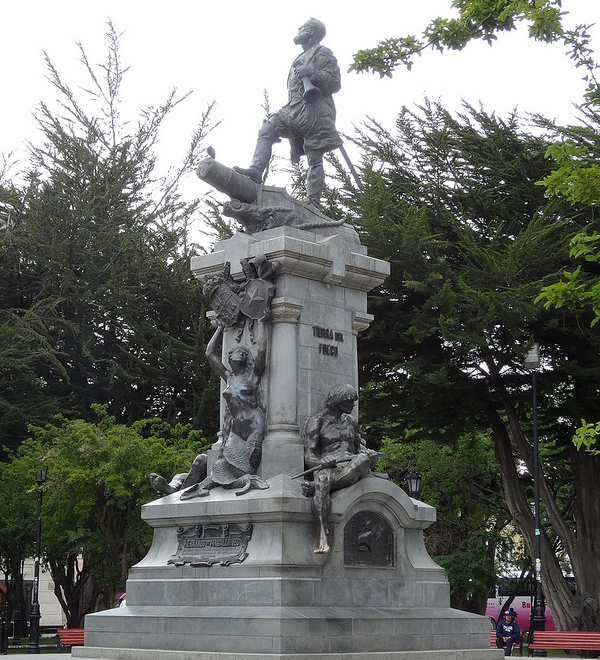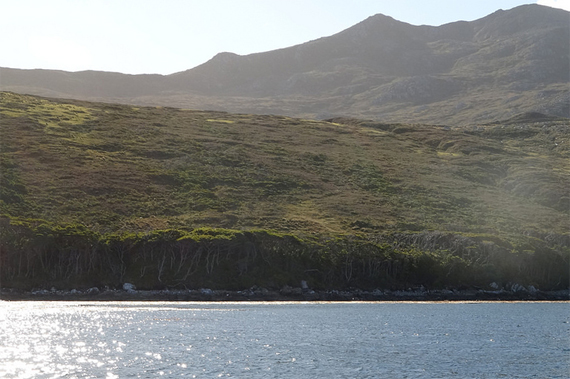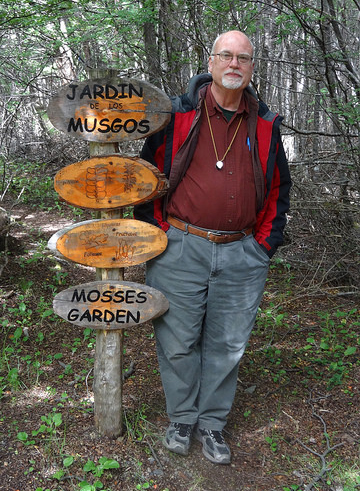From the Field: Bill Buck in Cape Horn 2014, Part 1
Posted in Travelogue on February 21, 2014 by Bill Buck
William R. Buck, Ph.D., is the Mary Flagler Cary Curator of Botany at The New York Botanical Garden. For the last three years, Dr. Buck, a moss specialist, and a team of colleagues have journeyed to the Cape Horn region at the southern tip of South America, an area rich in moss species.
January 6, 2014; Punta Arenas, Chile; 53.1667° S, 70.9333° W

After several years of shuttling to and from the far end of South America, this is to be our final expedition as part of this project to inventory the mosses and liverworts of the Cape Horn Archipelago. I have mixed emotions. Although I am sad to see the fieldwork come to a conclusion and, as a consequence, never again see this majestic landscape, at the same time I won’t miss the long, often exhausting flights down to the southern end of the world.
My flight out of New York was scheduled for the morning of Friday, January 3. Coincidentally, this was the day after a major winter storm had dumped eight inches (15 cm) of snow on the city, letting up only a few hours prior to my departure.
In contrast, the surrounding hillsides shone brown as my plane descended onto the airstrip in Santiago, Chile. It was obviously summer. Only a slender silver thread of water made its way along the valley bottoms, and I was glad that I found myself headed to a more verdant destination. Once inside the airport, I had expected to meet my Chilean counterpart, Juan Larraín, but he failed to appear by the time my connecting flight to Punta Arenas was ready to depart. The flight to Punta Arenas usually stops in Puerto Montt. While on the ground there, I glanced up from my reading to see if I could catch Juan among the boarding passengers, but to no avail. However, after the plane was in the air again, I felt a tap on my shoulder and turned to see the person I was looking for. Juan had boarded in Puerto Montt after all. One more piece of the puzzle fell into place.
Our facilitator, Ernesto Davis, was already waiting for us upon our arrival in Punta Arenas. It still felt like a homecoming even after so many arrivals to this same airport. But Juan and I would only have a single day before the rest of the group arrived. Last year it seemed as if every member of the expedition arrived on a different flight, and so this year I asked that everyone try and board the same flight down to Punta Arenas from Santiago. This way Ernesto wouldn’t have to make so many airport runs. So, right on schedule, the rest of the team arrived the following day.

Returning from the Field Museum in Chicago this year are Matt von Konrat and Laura Briscoe, both primarily interested in liverworts. The other three members of the team are new to the area. Barbara Murray, an authority on the moss genus Andreaea (the lantern mosses), has been identifying my collections of the genus for several years and chose to wait until this last trip to join us, with a scheduled visit to Isla Hermite. This island is the site where J. D. Hooker (of Kew), as part of the Erebus and Terror expedition of the 1840s, collected for an entire month when his sailing ships were kept ashore by the weather. We’re hoping we won’t suffer the same fate.

For Barb Andreas, whose background is in vascular plant taxonomy, bryophytes are a relatively recent interest. This is one of her first bryological expeditions outside of North America. A couple of years ago I offered her a summer internship to come to The New York Botanical Garden and work up a moss genus for the flora. One of the results was her recent publication in The Bryologist of a revision to the southern South American species of Blindia, a genus restricted to aquatic and wetland habitats. This included the description of three species new to science from our collections. The last American participant is John Brinda, a postdoc at the Missouri Botanical Garden, whom I brought along on Bruce Allen’s suggestion. This is John’s first trip outside North America, and he says he is prone to motion sickness. We’ll see how he handles sleeping on a boat!
Our final participant is a Chilean vascular plant taxonomist, Rina Charlín. I made space on the ship for her as part of my attempts to help Chilean botanical research by taking on non-bryological botanists who can benefit from access to this remote part of the world. Initially it appeared as if none of us, Chileans included, had ever been introduced to Rina. But as soon as I saw her I remembered that we met about a decade earlier, in Puerto Williams, on one of my early trips to Chile.
All photos courtesy of Barbara Andreas

